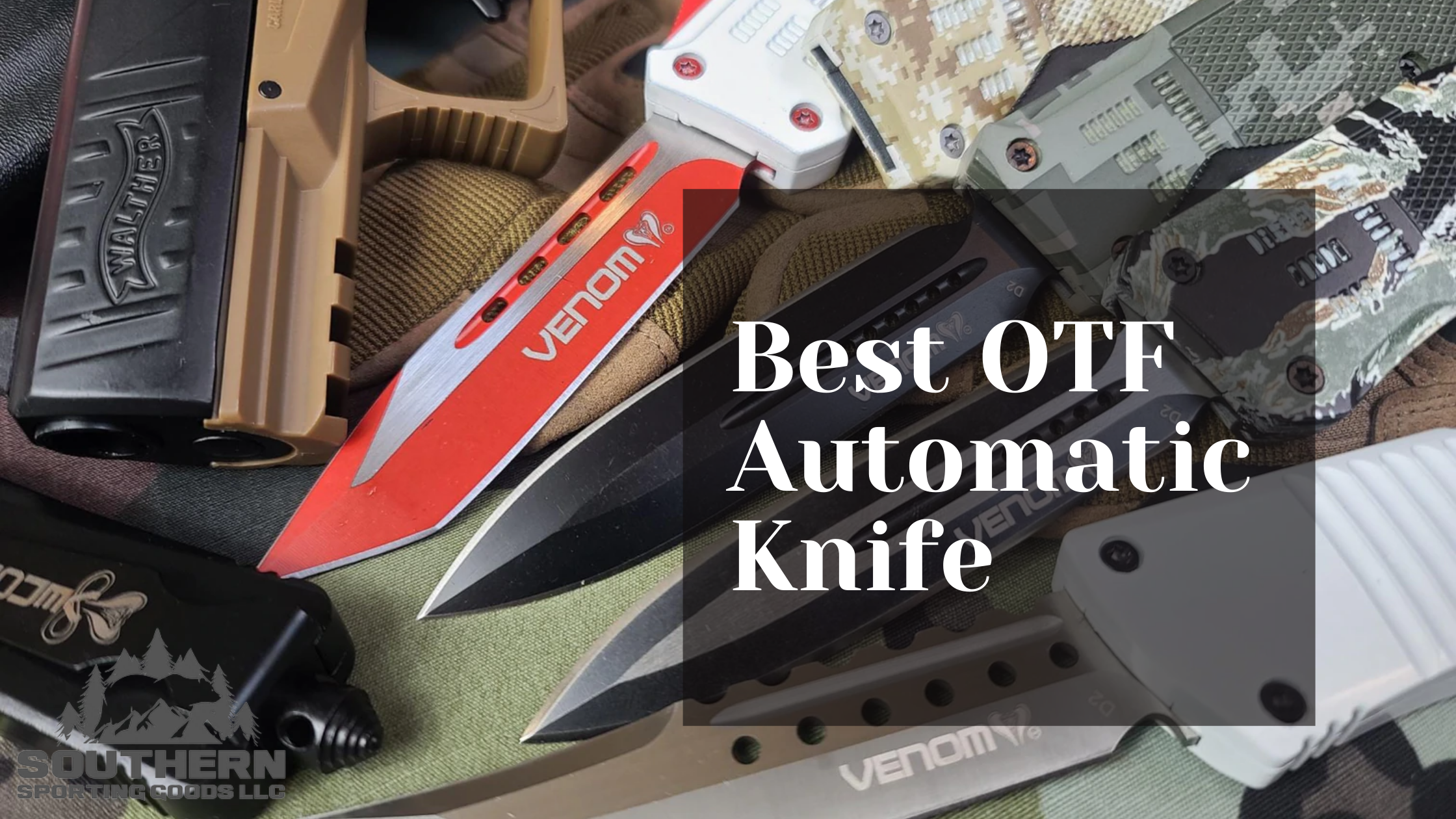An OTF automatic knife integrates dual locking and release mechanisms. When your knife is locked in the open position, it will define a 3 point blade-handle interconnection between the blade and the handle. OTF knives mean out-the-front knives, which means a single trigger is enough to open the knife and close the knife automatically.
Every knife comes with a separate firing and unique retraction spring to vary the speed and strength of the blade. Blade guide systems are responsible for the blade's longitudinal or linear movements. It incorporates an access port for cleaning or maintaining the internal components of the handle, which manufacturers substantially enclose with the handle.
Invention Of OTF Knives
This invention refers to knives having automatic-opening blades, specifically "out-the-front" knives with blades that open and close by sliding longitudinally and lineraly into and out of the front of the handle.
About The OTF Designs
If we talk about other knives, they can slide longitudinally to open or close the blades. But these "out-the-front" knives, referred to herein as "OTF" knives, can slide linearly. People often mistakenly refer to them as Stiletto knives. Manufacturers commonly use stiletto blades in the making of the best OTF knives.
Postscriptum, Stiletto is the name of a blade style that has dual sharpened edges.
Making An OTF knife
An OTF knife comprises:
- a handle that further includes a first handle side wall and a second handle side wall.
- Then there is a front end, a back end, and an opening into the space through the front end.
- Within the handle, there is a longitudinally sliding blade, one for closing, one for opening.
- Blade stops are responsible for preventing blade movement when the blade is open;
- An opening blade lock consists of a first latch arm capable of engaging the edge, and
- A second latch arm engages the edge when it is in the open position.
Comparison With Folding Knives
By comparing OTF knives with folding knives, we have concluded that OTF knives are inherently weaker than folding knives. Extended and extended positions make them more vulnerable. It is mainly because folding knives have two solid connection points between the handle and the blade.
The first point of connection is the quite solid connection between the handle and the blade, whereas the second is between the blade's tang and a blade stop pin in the hold. The latter contacts the blade's tang and stops the blade's rotation when the blade is responsible for rotating into the open position.
These two solid connections between the handle and the blade create folding knives with a solid blade handle structure. In addition, many folding knives have a third strong connection point between the blade and the handle. Then, a lock secures the edge in the open position, which is essential to release to move the blade in the closed or folded position.
We conclude that whether a folding knife has two or three of these connection points or "planes", the blade is very firmly fixed to the handle. As a result, the blade is held very firmly in the open position with slight blade oscillation relative to the handle.
Mechanism
OTF knives usually use a spring mechanism to pull out the blade from the closed to the open position. There are two basic spring mechanisms used in the best automatic knives. The first system is sometimes called the "shuttle" system. These systems use a trigger to apply a spring force to the blade.
The second most common system used a "mechanical" reloading system similar in design to the crossbow. With these systems, the user manually loads the spring, and this load is transferred to the blade when the trigger is activated. Usually, the trigger mechanism of the OTF is located on either side of the spring mechanism. As a result, when the blade is brought into the open position, it actually moves in a winding path. This causes unwanted wear on parts, including the blade's sharp edges.
Drawback
OTF knives completely lack the pivot pin's main stabilizing feature of folding knives. Indeed, in most OTF knives, the blade moves freely in the handle, at least at some point during the opening and closing motion. As a result, OTF knives are notoriously weak, and the blade is prone to wobbling when the edge is in the open position.
Although OTF knives include a lock to secure the blade in the open position, the buckle provides relatively little support for the blade. Usually, there could be only one and at most two connection points or ranges between the handle and the blade. As a result, most OTF knives are not too novelty, unsuitable for tactical operations and serious work requiring a stiff knife.
If you want to purchase the the best quality knives, must visit our shop section and look through the military tactical knives, and automatic OTF knives. Our superb quality knives will leave you awestruck.

